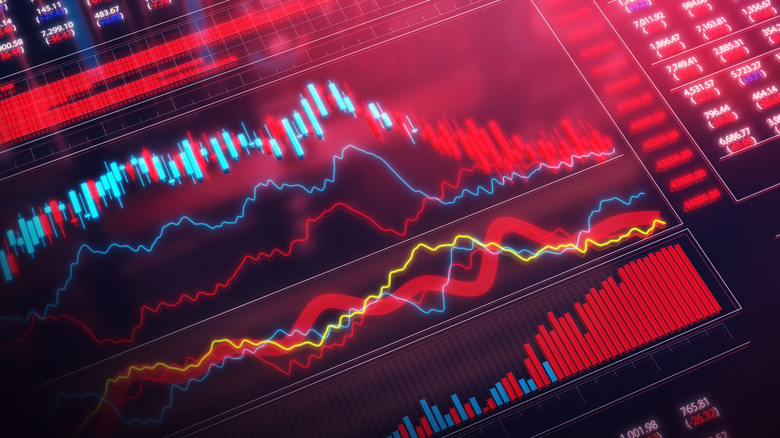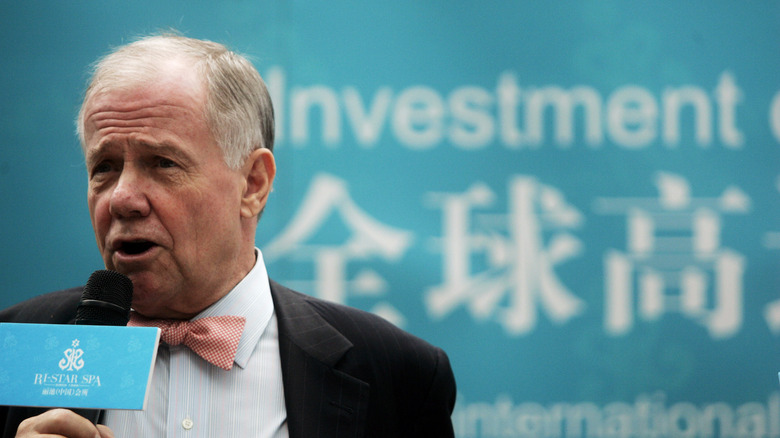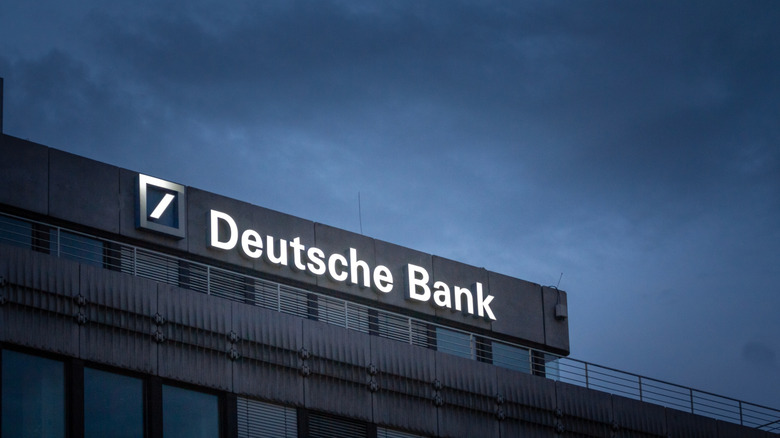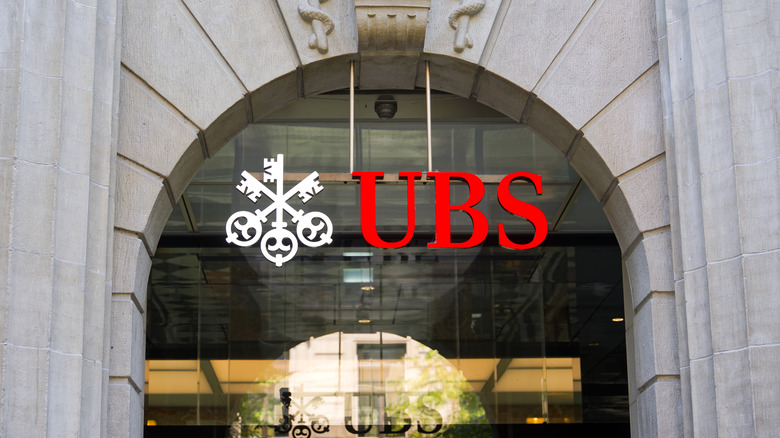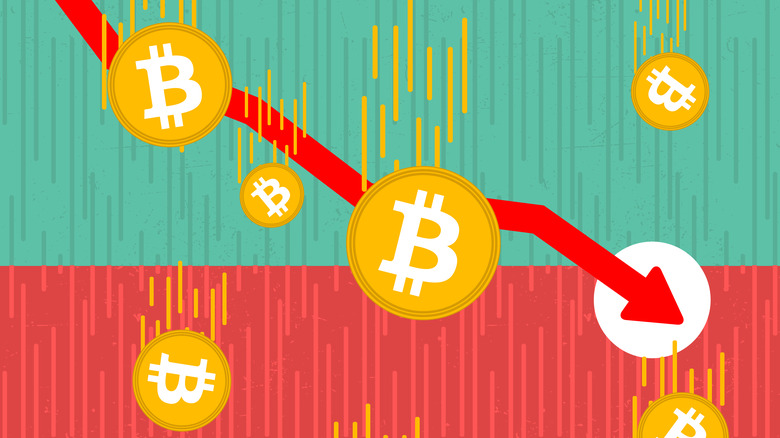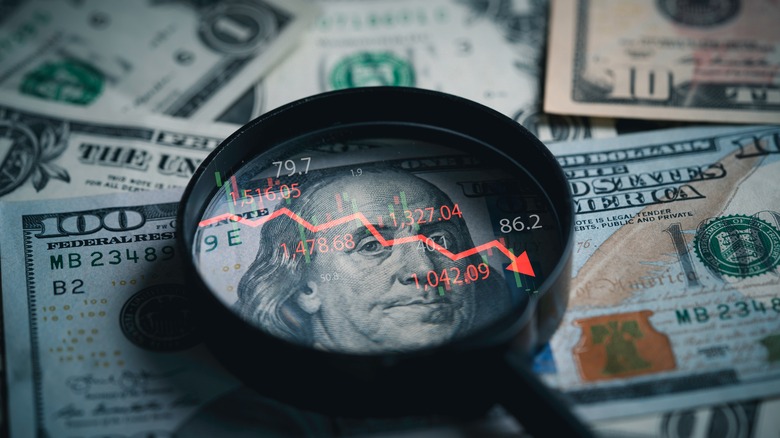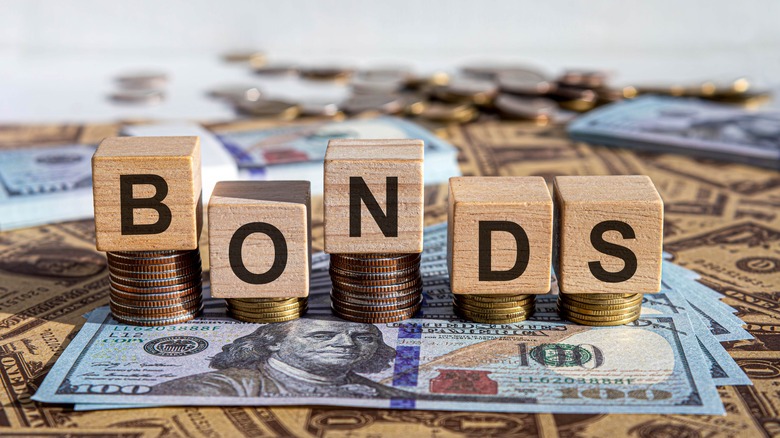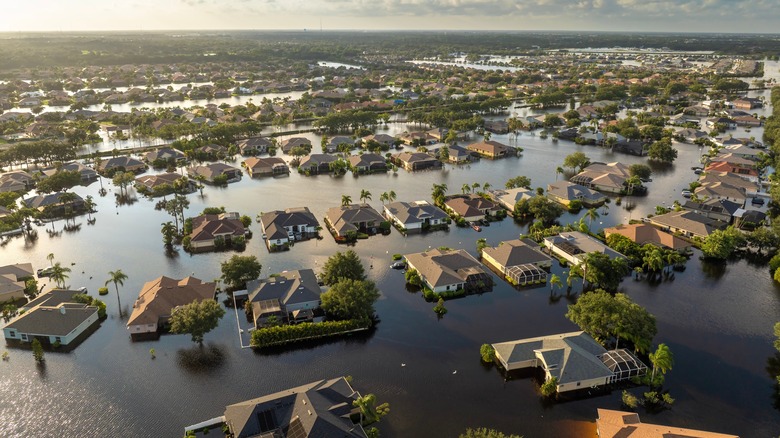These Grim Finance Predictions Will Make You Pause
The financial marketplace is rife with speculation and analysis. Stock traders, economists, and everyday consumers are at the whims of a complex network of subtle decisions and interconnected events that can send inflation spiking or ease the pressure and make things less dire. Consumers and retail investors seem to always be worrying about the market and economy, even as data continues to suggest strong performance across the board. The disconnect leaves many thinking that they're somehow being left behind while others gain the upper hand. In truth, many factors come into the picture, and there's a lot more to an individual's prosperity than just "the economy." Even with this in mind, there are some curious and potentially disheartening predictions about the stock and housing markets, and many other corners of the consumer landscape that may make things a bit tighter for the average consumer. Many financial firms and individual stock market players put out predictions on market movements. Some have been fairly rosy in the past, but numerous predictions swirling at this present moment paint a grim picture of what lies ahead.
For instance, Morgan Stanley expects governments across the globe to spend more in the near future to combat stagnant economic growth. Increased spending is aimed at simulating the economy in the short term, but can easily translate into long-term uncertainty as this increased outlay of capital comes back around to increase national deficits. This might indicate a longer timeline of recovery than most consumers will want to see, and it's just one of many grim finance predictions dominating headlines today.
Berkshire Hathaway's 2024 and '25 investment behavior signals potential down years incoming for the S&P 500
Berkshire Hathaway has been a stalwart of the stock market for decades. Led by the famously long-term investor, Warren Buffett, B-H has become a genuine force when it comes to drawing insights into future market movement. No one carries a crystal ball with them, but the leadership of Buffett has long been a source of good fortunes for the textile-company-turned-insurance-and-stock-trading titan. Buffett is a source of great financial lessons for investors looking to improve their own trading, among them is his insistence on reading and thinking. He spends as much of his time as possible researching, so that when an opportunity presents itself, he has lots of background knowledge to help find the right path forward.
Sometimes, that correct path involves selling assets or holding firm. When Buffett and Berkshire Hathaway opt to limit long term exposure, there's often a dip in market returns that follows. Since 2010, the annualized return of the S&P 500 has averaged 13%, but in years following a net sell from the B-H portfolio, the average dips to 11%. In 2024, Berkshire was a net seller, and the company is poised for the same outlook in 2025, Forbes reported. To be fair, the S&P 500 has a 14.53% year-to-date return as of October 6, and Berkshire has missed the mark significantly in the past. But if the long-term trend holds, the market could be headed for some depressed earnings to close out 2025 and into January.
Kevin O'Leary anticipates the housing market to remain 'in its current state of stagnation'
Kevin O'Leary is an outspoken financial personality with plenty of great advice for investors, savers, and entrepreneurs. His appearance on the long-running "Shark Tank" television show places him as a frugal financial mind with one eye constantly on future income generation opportunities. In August, O'Leary penned an Op-Ed in The Daily Mail suggesting that while the Fed has indicated it will "wait and see" on a potential, forthcoming rate cut later on in 2025, he isn't holding his breath.
"The days of free money and low mortgage rates are over!" he wrote. His analysis suggests that the current state of stagnation within the housing market will continue to linger through the rest of the year and into the calendar's turnover. Among the issues plaguing modern buyers is the current market for mortgage financing. Homeowners with low mortgage rates don't want to sell and expose themselves to a new loan that's kneecapped by an interest figure two or three times their existing rate. This means that inventory has remained relatively low, with sellers not particularly incentivized to move on. Those who do will want to get their money's worth, and with low inventory and a heightened mortgage on the horizon for their next home, prices are also at extremes. Freddie Mac puts the current average 30-year mortgage at 6.34%, while FRED data suggests that the 2025 Q2 median house price ($410,800) remains near an all-time high level. Without a notable rate cut coming to relieve pressure, things may remain at this tense stalemate.
Jim Rogers predicted a market selloff that will be 'the worst of his lifetime' in August 2024
Jim Rogers offered some grim words of warning when speaking with ET Now last year. He suggested that the market has seen such a prolonged period of decadent growth that we may be standing on the precipice of the next catastrophic collapse. As is the case with individual stocks, the market as a whole can't continue to gain in value forever. Correction periods have to creep into the mix from time to time, and bear markets have occurred with significant force at numerous occasions throughout history. Bull markets average a little under three years in length. Before the pandemic sent stocks reeling, the market had experienced a 11-year long bull run. Most recently, traders have enjoyed a 2.5-year bull trading window that continues into the present. That suggests that if for no reason other than the law of averages, investors should be gearing up for at least a temporary market correction.
Rogers suggests that recent growth has been so gaudy that the next market sell-off will be "the worst of his lifetime." He notes: "Always in history, when everybody is making a lot of money, it is a time to worry." He has begun to prepare for a down market by stocking up on free cash in his portfolio. This is a great idea for those who expect a turnaround, because it allows for unrestricted buying opportunities when share prices take a hit. However, you'll have to sell out of positions or focus on saving more in the lead-up to an expected downturn, leaving your money on the sidelines if you're wrong.
David Rosenberg warns investors about the Shiller CAPE ratio
One important indicator of stock value that many investors fold into their analysis is the P/E ratio. This is a measure of a company's share price to its earnings. P/E ratios do at least a decent job of suggesting whether or not a stock is currently priced at a fair value. As with everything in life, the P/E ratio is useless without context. On average, a company priced "fairly" sports a figure between roughly 20 and 25. However, short term changes can send any particular brand's figures out of whack, and average numbers also vary by industry: Tech companies tend to have a higher number, while services, manufacturing, and others trend a bit lower than this total market average. Taking this as one data point is crucial, however, there's another, broad figure that delivers the same information regarding the stock market as a whole that may indicate more important underlying trends.
David Rosenberg, a Canadian economist and frequent contributor at outlets like Bloomberg, CNBC, and elsewhere, warns of trouble with the CAPE ratio (Cyclically Adjusted Price-to-Earnings ratio). This is a measure of the S&P 500's current price divided by its 10-year moving average. The result is a market-wide indicator of the exchange's price "hotness." The 20-year average is 27, but as of December 2024 it was 37.9; today the CAPE ratio is 39.51. The indicator's highest figure — in the low 40s — came just ahead of the dot-com bubble burst.
Deutsche Bank warns of long-term fallout from shifting trade policy, stifling global economic growth
Deutsche Bank joins Morgan Stanley in its expectation of stifled global economic growth. The outlet anticipates that 2025 will end with a modicum of growth, but predicted a muted 2% expansion in the U.S., and just 0.9% in the Eurozone. Even Chinese growth is expected to underperform on the year, at 4.2%, by Deutsche Bank's models. The financial firm suggests that shifting trade policy is largely to blame for this underperformance.
Central banks across the world, the outlet predicts, will have fewer options available to them in managing inflation and tackling interest rate changes as a result of increased geopolitical instability in 2025 and moving forward. There's more uncertainty surrounding tariff policy this year, and plenty of continued fallout persisting from years of fiscal austerity measures designed to help navigate pandemic needs and other challenges, such as the massive fly in the ointment that the Suez Canal shutdown created in 2021. These kinds of challenges are commonplace, of course, but with the added uncertainty of evolving trade negotiations, war in Eastern Europe and the Middle East, and more coming into the picture, volatility is at a heightened level.
UBS puts chances of U.S. recession this year at 93%
Recessions are always a worry for consumers. Backsliding financial circumstances place tremendous strain on numerous aspects of daily life, including a contraction in the job market that results in layoffs and difficulty in finding new work. The financial services firm UBS reported in September that its analysis yielded a 93% probability that 2025 would experience recession conditions as the calendar continued to flip over. The year is still (somewhat) young, and according to UBS's assessment, things have only become more troubling as the year has progressed, with the credit metric-based analysis from the firm also indicating a 41% likelihood, doubling from January to July.
The August jobs report showcased some compelling figures that trend toward this outcome. Unemployment rose to 4.3%, reaching up near its highwater point in late 2021, amid the depths of the pandemic's worst financial wreckage. Surviving a recession is all about shrinking spending categories that aren't essential and positioning yourself to invest harder during the dip. Standing pat in your working arrangement is also an important feature, as is adding to your emergency fund ahead of a potential downturn in financial fortunes. Preparing for the worst while trying to keep your day-to-day finances on an even keel and preparing to take advantage of a future rebound will help you navigate the uncertainty with better success.
Warren Buffett goes full-bearish on cryptocurrency's future
In 2018 Warren Bufffett made his thoughts on cryptocurrency as a whole clear in a CNBC interview. His long term thinking on the asset class is grim, to say the least. Cryptocurrency has seen enormous fluctuations. It's enjoyed meteoric value rises, and cratered on numerous occasions. The volatility of the market makes it an interesting investment option for those who are looking for a bite of the risk apple and have little in the way of aversion to value collapses. This investment isn't for everyone, and those with short timelines or limited resources will want to steer clear of cryptocurrency in most circumstances. If Buffett's prediction is correct, though, crypto isn't an asset that some will want to avoid but rather something that everyone should look to shift out of.
Buffett suggested that cryptocurrency "will come to a bad ending." His reticence over the financial alternative is rooted in the asset's essentially non-existent value factor. The only thing that gives Bitcoin or any other crypto token value is the market demand for it. There's no pegged value, and changes in federal policy in the U.S. or elsewhere could theoretically destroy the industry completely by limiting or outlawing access or usage. Regulation could also upend the value structure by making it harder to access or more cumbersome to transmit. There are nothing but question marks surrounding the long term outlook of cryptocurrency as a whole. It's remained an interesting and highly fluid asset thus far, but that same volatility could ultimately destroy the tool for good, something that Buffett suggests is basically the only logical endpoint of the experiment.
In 2012 Fred Foldvary predicted 'the depression of 2026'
Economist Fred Foldvary wrote about cyclical financial movements in 2012. Amid the recovery after 2008's utter financial meltdown, Foldvary noted that the "business cycle in the USA has had a period of 18 years, so the most likely year for the next great recession is 2026." Moreover, he suggested that this depression will "have the same causes as the other depressions since the early 1800s." In his estimation, the single, fundamental cause of the economy's boom-and-bust cycle is land subsidies. This federal intervention thumbs the scale of the market, and artificially shifts value, business strategy, and more. The result is a slowly ballooning financial bubble that continues to be exploited, capitalized upon, and stretched to its limit. Eventually, all bubbles burst, and the more intervention that occurs the greater the ultimate fallout will be.
Consumers are seeing a glimpse of this at play with housing prices near all-time highs and numerous other components of the wider consumer market seeing extreme price stretching. At the same time, businesses are filing for bankruptcy across the spectrum, and conglomerate enterprises are gobbling up competitors at an alarming rate. If Foldvary's analysis comes to pass, the 2026 bust will be worse than 2008's because the national debt will be so large that even bonds aren't considered a safe bet, something that is in fact, beginning to unfold.
Bankrate highlights uncertainty in the bond market, 'one of the best predictors of the overall economy'
An inverted yield curve (when short-term bonds offer higher yields than long-term options) is one of the best predictors of a recession. JP Morgan notes that the relationship between the 3-month and 10-year bond rates has predicted every single recession since 1960, save for one false positive in 1966. To be clear, the yield curve is not currently inverted. But for most of the year the 10-year minus 3-month maturity figure has been floating around zero (via FRED), flirting with an inversion and sending the needle into the red for many investors who follow bond yields closely.
Bankrate highlights three specific warning signs that bond behavior is signaling economic weakness. 30-year bond rates are at significant highs in the current market, rising to levels that haven't been seen since 2008. Alongside many other analyses, Bankrate also notes that the federal deficit increases are a point of concern, with inflation continuing to tamp down short and moderate term outlooks. These factors may ultimately drive bond yields even higher, and given the loose, inverse relationship between bonds and stocks, this is a decidedly bad thing for the economy more broadly. Finally, the White House's continued pressure on the Federal Reserve has created lasting financial uncertainty that can and likely will rear its head in unpredictable ways heading into the future.
Saxo's 'outrageous predictions' include the bankrupting of a major insurance company for the first time after a natural disaster
It should be noted that unlike the numerous other predictions that spell out potential doom and gloom for American consumers, Saxo's list of "outrageous predictions" is based on sound financial data but presents more as a tongue-in-cheek warning. These predictions lean toward the ridiculous, but aren't exactly based in total fantasy. One, for instance, suggests that the U.S. might impose a special purpose tax on AI data centers to reign in the runaway power costs that they are fueling.
A different prediction on Saxo's list should catch the eye of a concerned citizen and investor, though. The outlet also 'predicts' that a natural disaster will bankrupt a large insurance company for the first time this year (on another note, apparently Nostradamus predicted massive flooding in 2025). Last year was characterized by unsettlingly high financial losses coming off the backs of hurricanes, fires, and flooding. According to NOAA, there were 27 individual "climate disaster events with losses exceeding $1 billion" affecting the United States in 2024. With the federal government discontinuing reporting like this heading into the future, it may be difficult to quantify the scope of disasters for the foreseeable future, but suffice to say, these losses, both in dollars and human life, have been growing exponentially for some time. It's perhaps within the realm of possibility that a major insurance provider's insolvency could come in the wake of a massive storm's path of destruction, leaving millions to pick up the pieces of their life without that layer of support.
